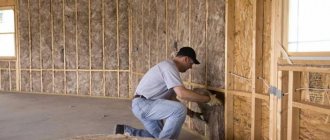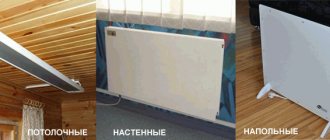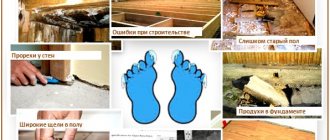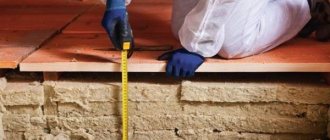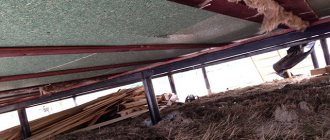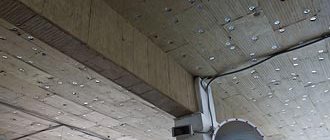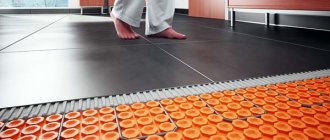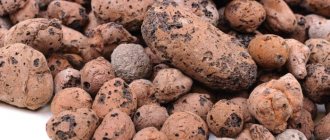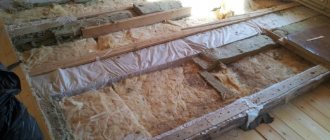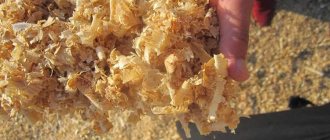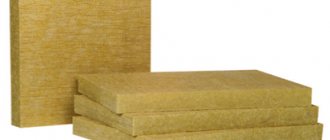Insulating floors with foam plastic in private houses, garages and other buildings with one floor is a necessity. Heat loss through this zone can account for up to 1/5 of the total heat loss of the building. Insulating the floor is a much simpler procedure than thermal insulation of the ceiling or walls. Polystyrene foam is a popular and sought-after insulation material used when working with floors. It has a significant list of advantages over other materials used for floor insulation. Installation of polystyrene foam is so simple that you can do it yourself without resorting to the services of repair specialists.
What is polystyrene foam?
The answer to this question is hidden in the title of the material. Polystyrene foam is a mass of foamed polymer, that is, plastic. It is produced by creating granules connected to each other, inside which there is air. Its content in the final product reaches more than 90%. The material is very light and does not conduct heat well. The raw materials for making polystyrene foam are different types of polymers. But initially this name was specific to foamed polystyrene.
There are two methods for making polystyrene foam:
- Ordinary polystyrene foam is made by acting on raw materials placed in a mold using steam. The material has a crumbling structure and is produced in the form of white slabs.
- Extruded polystyrene foam is made from molten foam that is pressed or extruded through special molding equipment. This material has a much denser structure, it is more flexible and dense than ordinary foam. But it must be taken into account that such a production technology increases the mass of the material.
Advantages of polystyrene foam
The list of advantages of this insulation material is not limited to a couple of useful qualities.
The extended list of benefits can include the following characteristics:
- The low level of thermal conductivity of the material allows the use of thinner layers when arranging insulation. When insulating floors in rooms with low ceilings, this can be a decisive factor in the choice.
- The insignificant weight of the material does not weigh down the structure and does not load it.
- Impermeable to moisture. Polyfoam does not allow water to pass through or absorb it, maintaining its shape even in conditions of high humidity.
- The operating temperature range of this insulation is from -50 to +95 degrees Celsius.
- It is easy to work with, since cutting the material can be done with an ordinary knife. Therefore, installation of the material is very simple, since it allows you to cut slabs of any size and configuration.
- To install insulation, you do not need deep knowledge in the construction industry or extensive practical experience. All the work can be done independently, without protective suits and special equipment.
- Low acquisition costs. Creates a special appeal in conditions of shortage of funds for repairs.
- Polystyrene foam does not attract rodents and harmful insects.
Disadvantages of polystyrene foam
- The main disadvantage is the low level of fire safety. Polystyrene foam easily ignites when exposed to an open flame, and during combustion it emits a large amount of acrid smoke containing hazardous compounds. There is a potential risk of suffocation if such fumes are inhaled. Therefore, foam insulation is strongly not recommended indoors.
- Low level of vapor permeability. Creates conditions for moisture to settle on the surface of the material, which increases the likelihood of the appearance of mold colonies that are dangerous to human health.
- Low strength foam. If extruded polystyrene foam is considered more resistant to mechanical stress, then ordinary polystyrene foam with a lock is easily accidentally damaged when hit or trying to bend the sheet.
Insulation class mineral wool
It is profitable and safe to insulate wooden houses with mineral wool.
Mineral wool is more often used for wooden houses
If we compare mineral wool with expanded polystyrene, with a comparable density, the thermal conductivity coefficient of the former will be on average 50% higher.
Where 5 cm of polystyrene foam is enough, 7.5 cm of mineral wool can replace it. There are several varieties of mineral wool with different characteristics. Products from different manufacturers vary significantly in quality.
Comparison of the characteristics of mineral wool from well-known Russian manufacturers
Types of mineral wool:
- Glass wool is the most affordable, containing harmful formaldehydes. It generates a lot of dust, so it is practically not used for residential premises.
- Slag wool is also a material harmful to health due to phenol-formaldehydes. There are composite models that contain up to 20% wool. Slag wool retains heat more effectively. It can be used for the floor of an unheated attic.
- There are several types of stone wool. They have the same disadvantages as the previous types, but to a lesser extent. Basalt wool does not burn even when heated to +1000 degrees.
Foil-coated basalt wool
Such insulation costs on average from 100 to 160 rubles per square meter with a thickness of 5 cm.
Mineral wools are vapor permeable, which is considered a great advantage and disadvantage. When wet from steam, they lose thermal efficiency; glass wool suffers more than others.
Therefore, they must be protected with vapor barrier films.
This need not be done in interfloor ceilings when all rooms are heated. The steam simply passes through, the moisture evaporates, and the insulation dries out.
Wool with a density of more than 150 kg/m3 is used as a base for screed, although it is better to use extruded polystyrene foam.
To insulate frame floors, you can use wool with the lowest density, which will make insulation more effective.
The frame floor and walls are insulated in four layers
If we average the layer thickness for structures facing the street, the average thickness of mineral wool is taken to be 15 cm.
The floors are also insulated in layers. For mineral wool, a rigid base is required, since low-density material cannot support its own weight without sagging.
Harm to human health from polystyrene foam
It is difficult to give a definite answer to this question. There is a strong belief among the general public that polystyrene foam is capable of releasing a considerable range of substances that are potentially hazardous to human health. At the same time, the history of the use of polystyrene foam dates back to the middle of the 20th century, and during this time scientists were unable to identify at least one disease that would be directly related to the use of this material for insulation. Moreover, it is successfully used not only in the construction industry, but also in food production.
It is known for certain that polystyrene foam can emit a carcinogen called styrene that is dangerous to humans. The process occurs only when exposed to direct sunlight or high temperatures. But standard operating conditions of the material do not imply the influence of these factors, since some kind of coating is applied on top of the foam. Under such conditions, the concentration of styrene in the atmosphere does not exceed standard values, which means it is completely safe.
To be completely sure of absolute safety, you should pay attention to the styrene content in the selected type of expanded polystyrene. The highest quality materials from foreign brands contain no more than 0.05% of this substance. In types of foam that are not of high quality, this figure can be up to 0.2%.
Expert opinion
Konstantin Alexandrovich
If you cannot choose between the desire to insulate yourself with minimal time, effort and finances and concern for the health of your household, you should insulate the floor surface from the outside, and not inside the living rooms.
Methods
There are two fundamentally different options for carrying out floor insulation work.
In some cases, flooring is made of heat-insulating materials over beams. The result is a cake consisting of two plank floors, between which a waterproofing film is laid out, and a layer of insulation on top. In such structures, the wood, despite preventive measures, gradually becomes saturated with moisture and begins to rot.
Another type of insulation is performed directly on the ground by casting a reinforced concrete monolith with a lower waterproofing gasket and an upper heat-insulating layer. The resulting slab, in fact, is a cushion floating on the foundation, withstands and transfers to the ground the load from the weight of the inhabitants, furniture and household appliances in the house.
The insulation in such structures must have high densities and low hygroscopicity, because some moisture can seep through the waterproofing and concrete.
Step-by-step instructions for insulating your own floor
Below are detailed instructions containing a step-by-step sequence of actions for insulating a floor with polystyrene. This technique is so simple that even an untrained master can easily handle it.
Stage 1. First of all, the subfloor must be thoroughly cleaned of dust and debris, and the surface must be leveled. All defects on it must be repaired, and any bulges must be subjected to a grinding procedure. It will not be possible to properly lay polystyrene foam on an uneven base. Waterproofing is laid on top. It is better to purchase the material in the form of rolls; it can be easily laid in strips with an overlap on adjacent sheets. Film fragments should be fixed by heating them with a soldering iron. The waterproofing material should also cover the edges of the walls, ten to fifteen centimeters.
Stage 2. Next, the lag of the future floor is installed. They are constructed from wooden beams that serve as the basis for covering the floors. To install the logs, you should use only high-quality dried wood. The logs can be secured to the surface of the base using dowel fastenings. The width of the step between the joists must exactly match the width of the polystyrene boards.
Stage 3. When the logs are already installed, it will be correct to lay all the necessary communications located inside the floor structure. These could be electrical cables, water supply and sewerage pipes, etc. Their installation must be carried out in strict accordance with the house plan or renovation project. On the first floors of private households, laying water pipes on top of thermal insulation material is even encouraged.
Stage 4. Foam boards are laid on top of the waterproofing film, between the joists. The process occurs gradually in a certain sequence. The sheets must fit tightly to each other to prevent the formation of gaps. If such a problem does arise, you can seal the cracks with installation foam. The height of the joists should be sufficient so that their edges rise above the surface of the insulation by five to ten millimeters.
Video
In the video, how to insulate the floor in a wooden house with penoplex:
We looked at the features of penoplex as insulation for floors in a wooden house. The important thing is that it is quite possible to carry out the installation yourself and that penoplex has truly outstanding performance characteristics. Thanks to our recommendations, as well as your own hard work and accuracy, you will be able to provide your country house or cottage with high-quality heated floors.
Maybe
Recommendations and common mistakes
Often, owners try to save on auxiliary materials, such as polyurethane foam, tile adhesive or plastic film. Any attempts to lay polystyrene foam even on the smoothest concrete, without fixing it with glue, are doomed in advance to further destruction of the insulation at the joints and seams.
The second mistake is related to improper arrangement of vapor barrier. A membrane with one-way water vapor conductivity should always be used. Moreover, the insulation system must have vents that ensure normal ventilation and removal of steam from the warm side of the concrete towards the colder surface.
General information
Extruded polystyrene foam is a thermal insulating synthetic material created in the fifties of the last century in the USA by specialists from The Dow Chemical Company. It was then that a more modern technique of foaming a special “cocktail” of polymers during extrusion (extrusion through a die) was first used.
At first, the foaming reagents were carbon dioxide and freon. But since 1999, due to the fact that freon has a detrimental effect on the ozone layer of the planet, they began to use a freon-free method for manufacturing the material.
Extruded polystyrene foam
Technical characteristics and types of extruded polystyrene foam
| Index | Polyspen | Polyspen Standard | Polyspen 45 | Control method |
| Density, kg/m3 | 30-38 | 30-38 | 38,1-45 | 5.6 each |
| Bending strength, MPa, not less | 0,4 | 0,4 | 0,4 | 5.8 each |
| Water absorption in 24 hours, % by volume, no more | 0,4 | 0,4 | 0,4 | 5.9 each |
| Thermal conductivity at 25+-5 degrees Celsius, W/m * °C, no more | 0,028 | 0,028 | 0,030 | at 5.10 |
| Toxicity, Hcl 50, g/m3 | T2 moderately hazardous | T2 moderately hazardous | T2 moderately hazardous | at 5.11 |
| Flammability group | G-3 normal-flammable | G-4 highly flammable | G-4 highly flammable | at 5.12 |
| Flammability group | B-2 moderately flammable | B-3 flammable | B-3 flammable | at 5.13 |
| Smoke coefficient | High smoke generating ability | High smoke generating ability | High smoke generating ability | at 5.14 |
| Compressive strength at 10% linear deformation, MPa, not less | 0,2 | 0,2 | 0,3 | 5.7 each |
